by Rose Gan
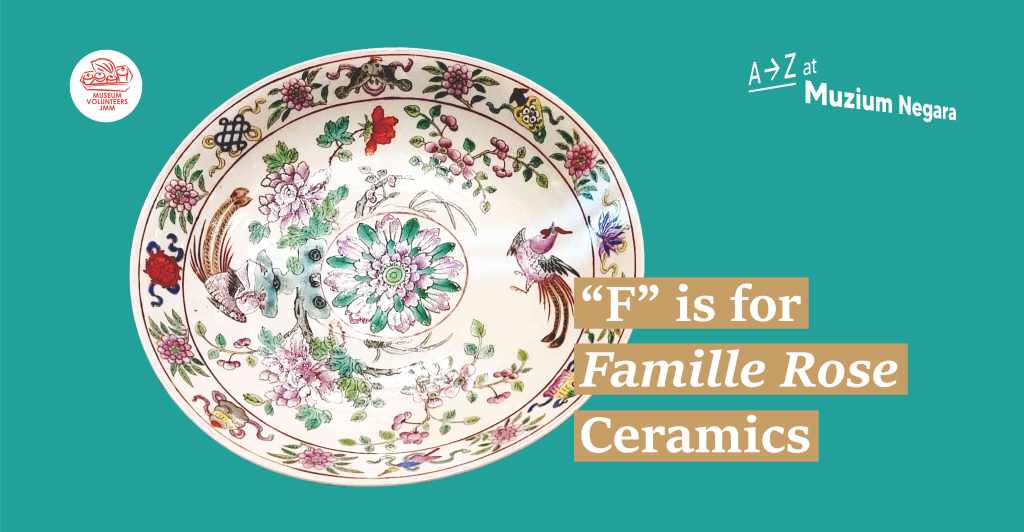
The Peranakan vitrine in Gallery B is dominated by a charming collection of Straits porcelain. This distinctive type of pottery, unique to South East Asia, typifies the blended culture of the Chinese Peranakan communities in Penang, Melaka and Singapore. Once underrated by ceramics experts for its inferior quality and over-gaudy style, Nyonya ware has finally come into its own and is now considered highly collectible – with a hefty price tag to boot!
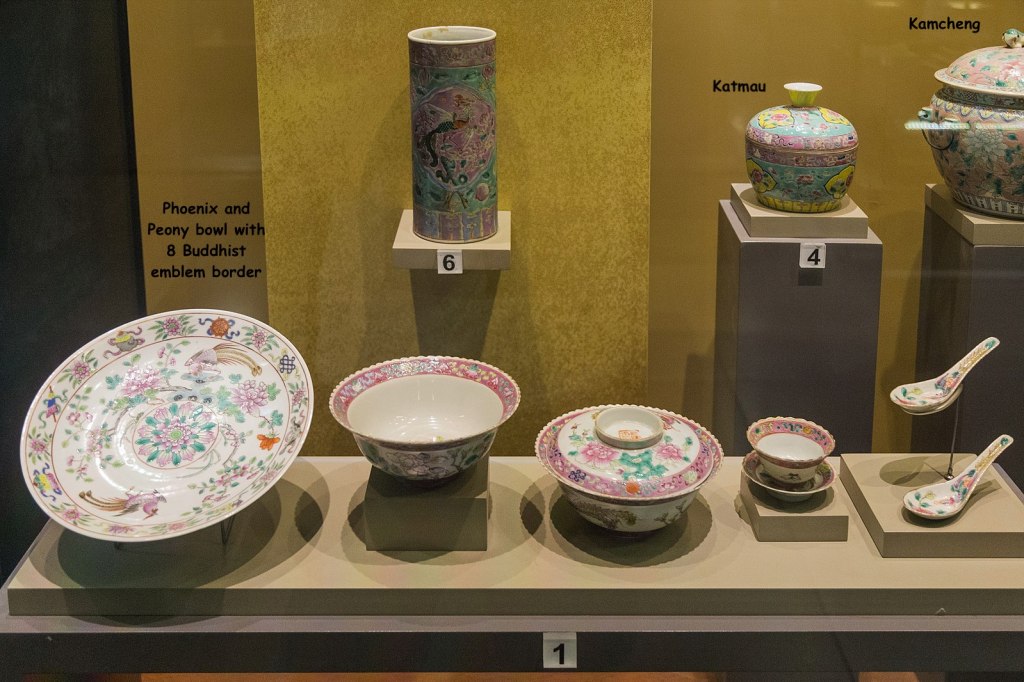
Nyonyaware uses the famille rose enamelling technique, although its decorative features are exclusive to the Straits and are quite distinct from other examples of Chinese ceramics of this style, which were usually more ornamental pieces. Straits Ceramics were intended for use at the family dining table on special occasions, and the pieces are entirely functional: bowls, teacups, teapots, spoons, plates, and lidded containers such as the kamcheng and katmau. They were commissioned from China by wealthy Peranakan families on the occasion of their daughters’ weddings; many contain specifically requested motifs or incorporate the family name, making them unique pieces of family history. Although blue and white Swatow ware was used for everyday purposes, the highly decorated famille rose ware took pride of place for fine dining.
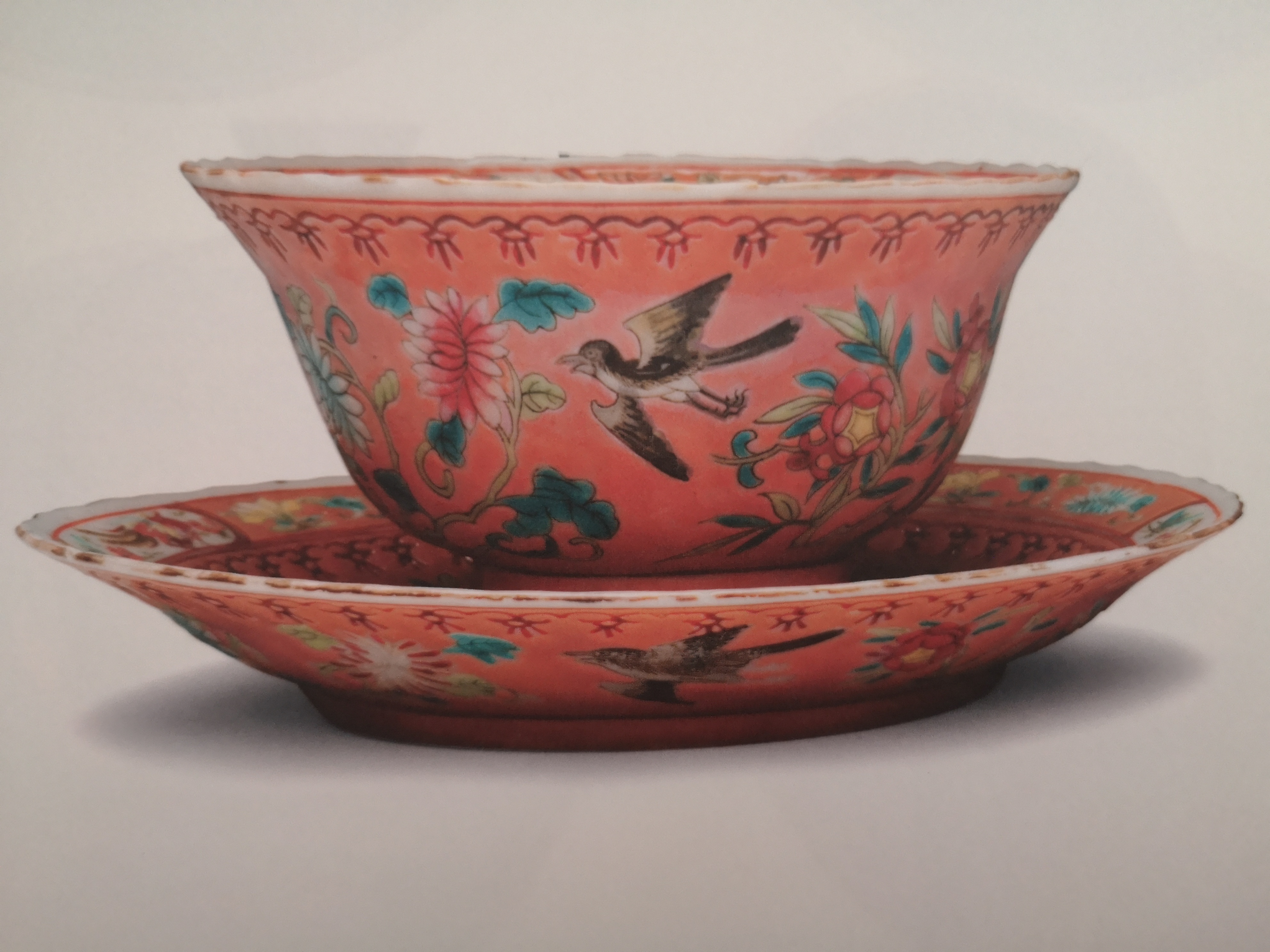

Examples of fine Straits ceramics from Datin Seri Kee Ming-Yuet collection; left: Teacup and saucer, right: Phoenix and peony detail
Most ascribe Jingdezhen as the place of production for Straits Ceramics because that was where the finest examples of Famille Rose pottery were made, but experts have challenged this view. Shards of Straits-style crockery have never been found in the area. It is more likely that Peranakan families ordered their porcelain wedding sets from humbler kilns in Fukien province, and that these are actually examples of coloured Swatow ware (now usually referred to as Zhangzhou ware) using the enamel famille rose technique, but of inferior production. Many of the oldest surviving examples of this pottery contain reign marks and stamps comparable to those of Jingdezhen, but they may not be reliable; it has been suggested that they may have been forged to suggest an earlier date and place of origin to increase the price. As many overseas Chinese in the Straits originated from Hokkien-speaking Fukien province, this theory is likely.
Some Straits porcelain was even Japanese made, for there was a time when Japan supplied these colourful ceramics to South East Asia. Japanese potters made exact copies, even down to Chinese stamps, and are difficult to distinguish other than by their softer shades of pastel. It is unclear whether Japan was trying to break into the overseas ceramics market or whether they were filling in the demand when wars in China disrupted production. No doubt it was probably a little bit of both!
But that is immaterial. Even if the quality of these wonderful ceramics does not match the finest examples of Chinese porcelain, they are now regarded as an artform in themselves. Richly coloured in vivid shades of pink, green, yellow and purple, Straits ceramics reflect the vibrant mixed heritage of the archipelago: bright colours, abundant flora and fauna, and the hybrid cultural traditions of the Malay peninsula syncretised with Chinese mythological symbols.
There are many similarities between the colours and motifs of these ceramics and the north coast Pekalongan batiks of Java, so favoured by Nyonya ladies for their sarongs. Interestingly these vibrant, busy batiks were themselves a departure from the earthy tones of traditional Javanese batiks and were inspired by Dutch decorative designs of flowers and birds. It seems that influences constantly pass east to west and back again! Such porcelain was even once referred to as ‘batik crockery’. Peranakan homes were similarly crammed with ornaments and decorative pieces with scarcely a space left empty in the desire of upwardly-mobile families to proclaim their success and prosperity in the richness and excess of their décor. The heyday of Pekalongan batiks was from the 1890s- 1930s, interestingly the same period in which Peranakan ceramics reached their peak.
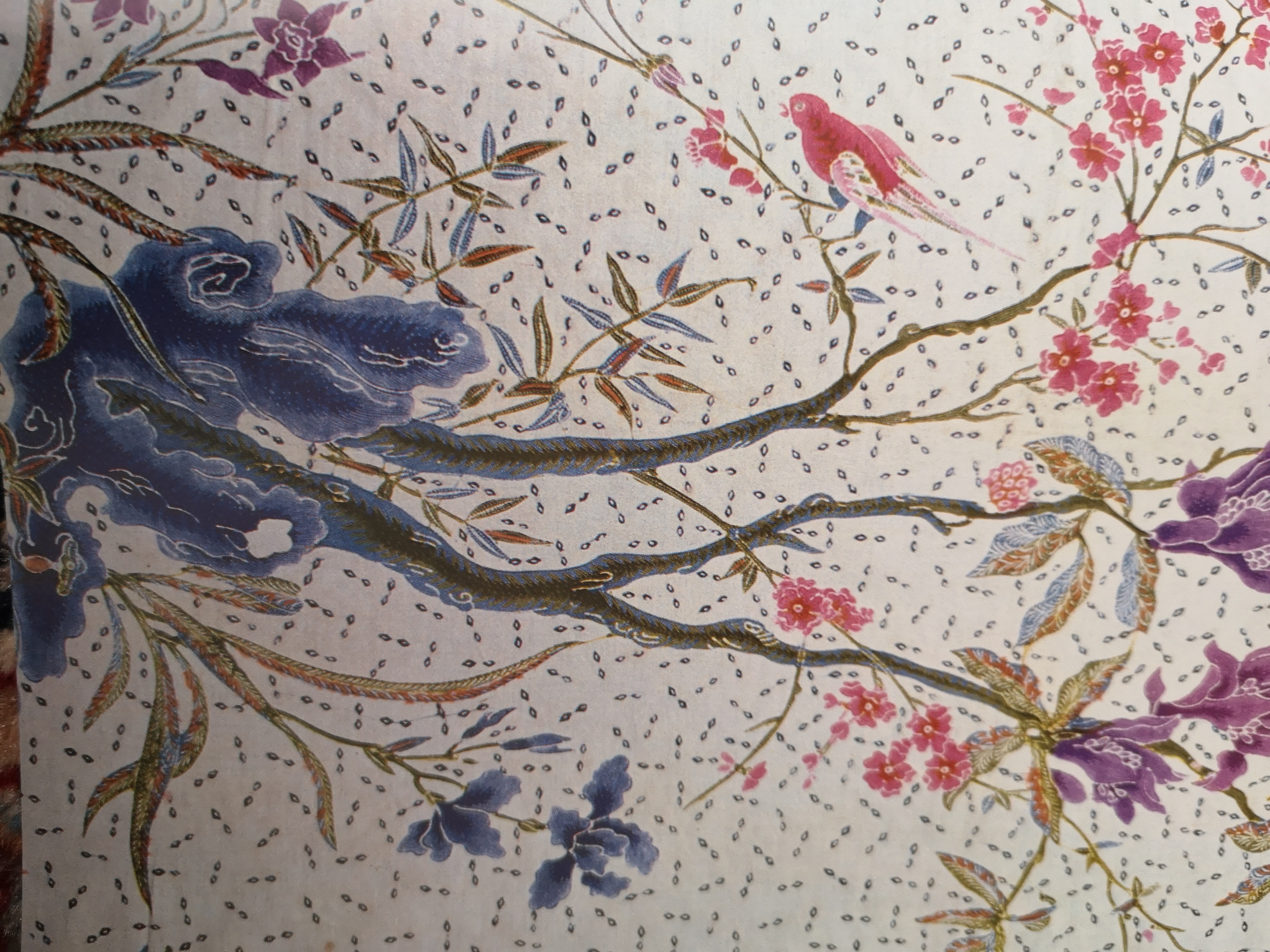
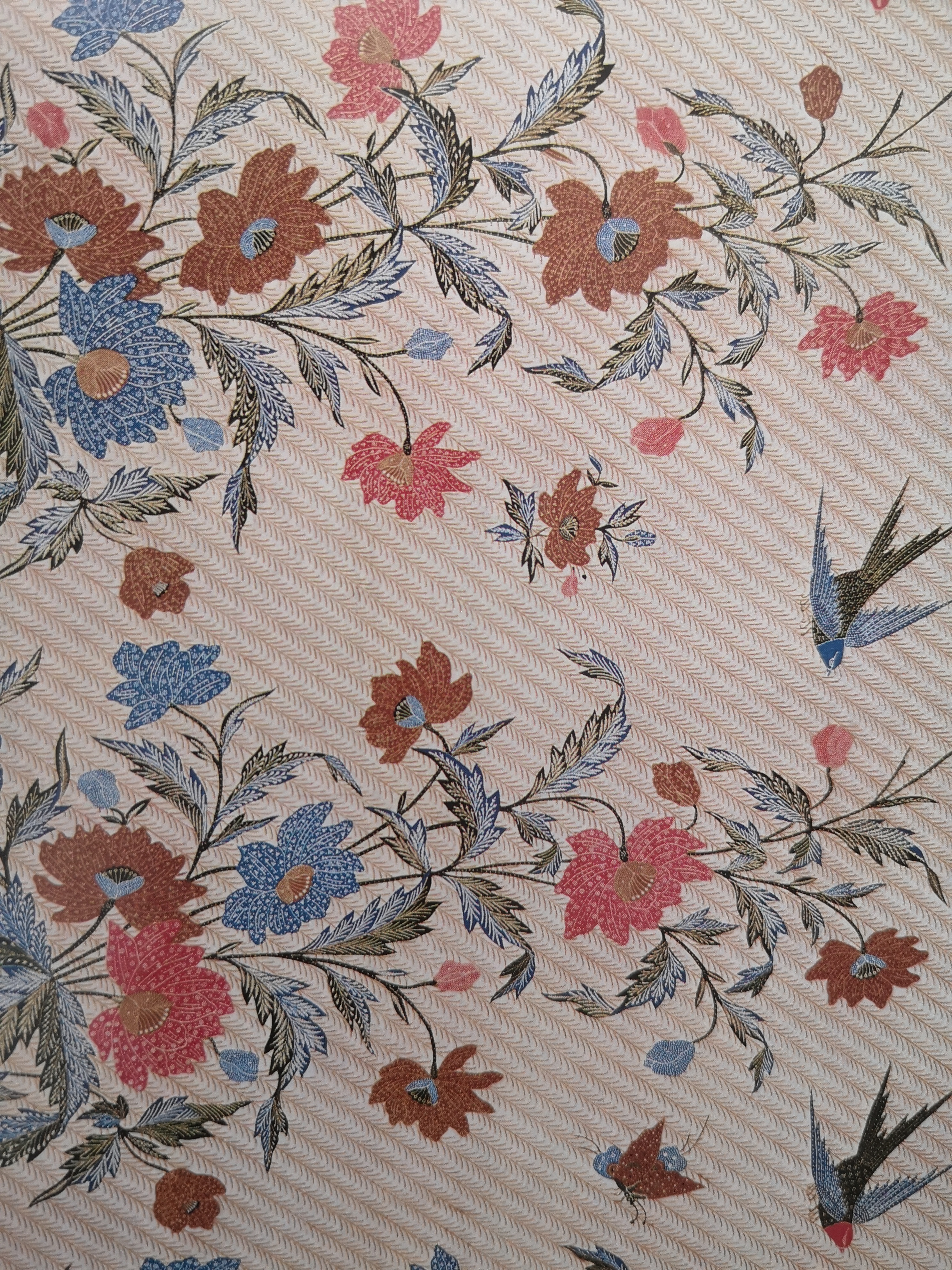
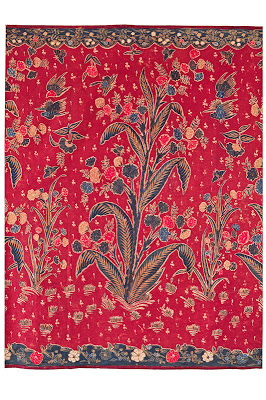
Pekalongan batiks. Image credit: left and centre: Inger McCabe Elliot; right: http://www.northcoastjavanesebatik.com/2012/07/pekalongan-batik-belanda-buketan-design.html
The decorations on Straits ceramics are unfailingly jolly and bright, like the colours. As they were designed for young brides at the beginning of their married life, the motifs are full of auspicious blessings wishing love, long-life, fertility and happiness. The most popular motifs – from a very long list – are peony (female beauty), the phoenix (yin and the perfect female qualities), the crane (longevity), the chrysanthemum (immortality), lotus (purity), double happiness etc. The eight Buddhist emblems often ornament the borders, including the paired fish and the endless knot, both particularly connected to lovers.
Colour is always highly symbolic in Chinese art. Red – the colour of the Phoenix – represents warmth, joy and the south; green stands for new life and growth and is connected to fertility; yellow is the earth and the sun, while light blue is the sky and the east. Pink – the most ubiquitous colour on Straits pottery – above all is the dedicated shade of women; it represents femininity and youthfulness.
This colourful pottery belongs to the Famille Rose category that uses coloured enamels to apply decoration to previously-fired white porcelain as an overglaze, which is then fired a second time at lower temperatures. The technique originated in Europe, where it was first used on glass. When the technology reached China in the late 17th century, this method of enamel finishing was introduced in metalwork (e.g. cloisonné). It is said that Jesuit priests at the imperial court of the Kangxi Emperor (1654-1722) first suggested its use in porcelain production around 1720, although the method was not perfected until the 1740s, during the Yongzhen era. The general term for such porcelain in China is yangcai or ‘foreign colours’, indicating its European roots. Yangcai ware is particularly connected to the great porcelain production centre of Jingdezhen.
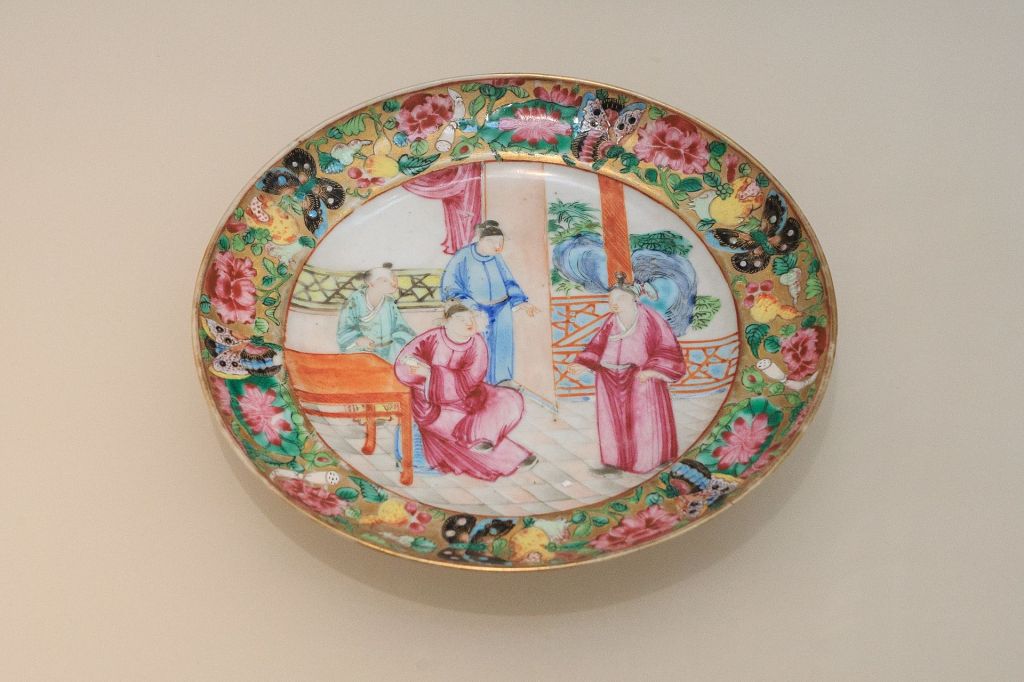
Chinese potters used a limited variety of colours in their porcelain because of the difficulty of working with minerals other than cobalt blue. Thus, a tradition of green (celadon), white (qingbai) and blue and white became the accepted Chinese aesthetic. The new foreign technique of applying colour in an enamel overglaze opened up a range of Chinaware that became very popular overseas, particularly in Europe and US. In China, however, it was regarded as inferior to the more acclaimed Ming and Qing blue and whites but it flourished as export-ware. The name ‘Famille Rose’ was coined in 1865 when Albert Jacquement, a French art historian and ceramic expert, categorised Qing ceramics according to their colour palette.
References
Chan Suan Choo. (2011). The Pinang Peranakan Mansion: A Museum of Straits Chinese Cultural Heritage. Eastern Printers.
Datin Seri Kee Ming-Yuet. (2004). Straits Chinese Porcelain. Cross-Time Matrix.
Elliot, Inger McCabe. (2004). Batik: Fabled Cloth of Java. Periplus.
In this Series
Click HERE for a list of articles in the A-Z at ‘Muzium Negara’ series.

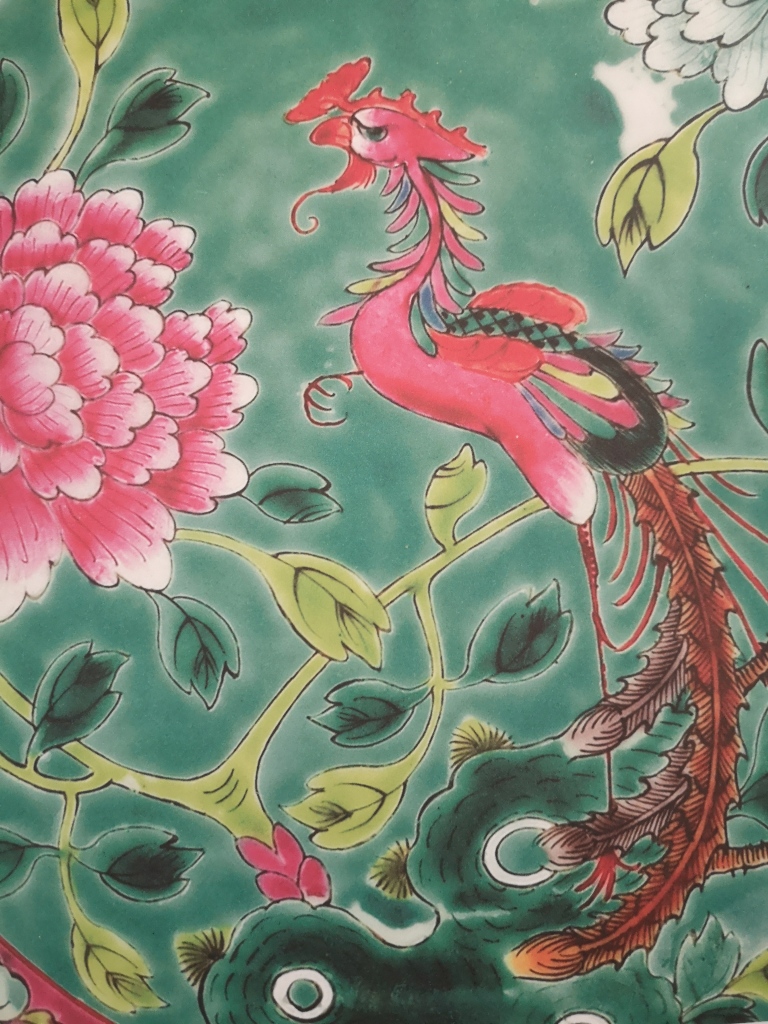
Thank you for your comment. Much appreciated! Rose
Thanks, Rose! A very informative article and timely too, with the last SEACS lecture on ceramics coming up on Wednesday.